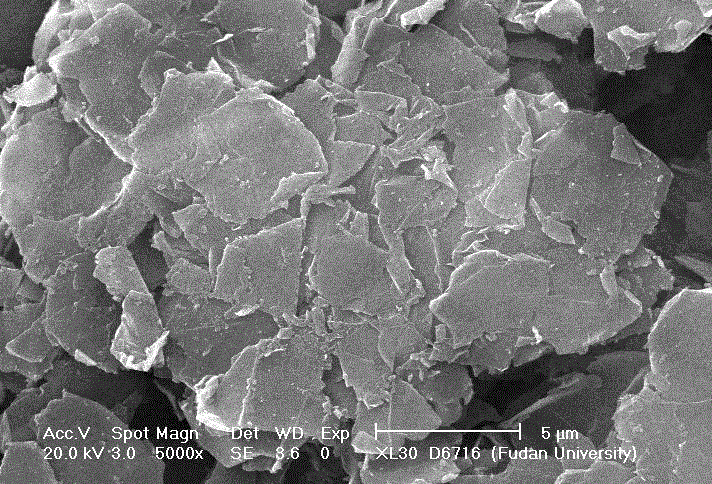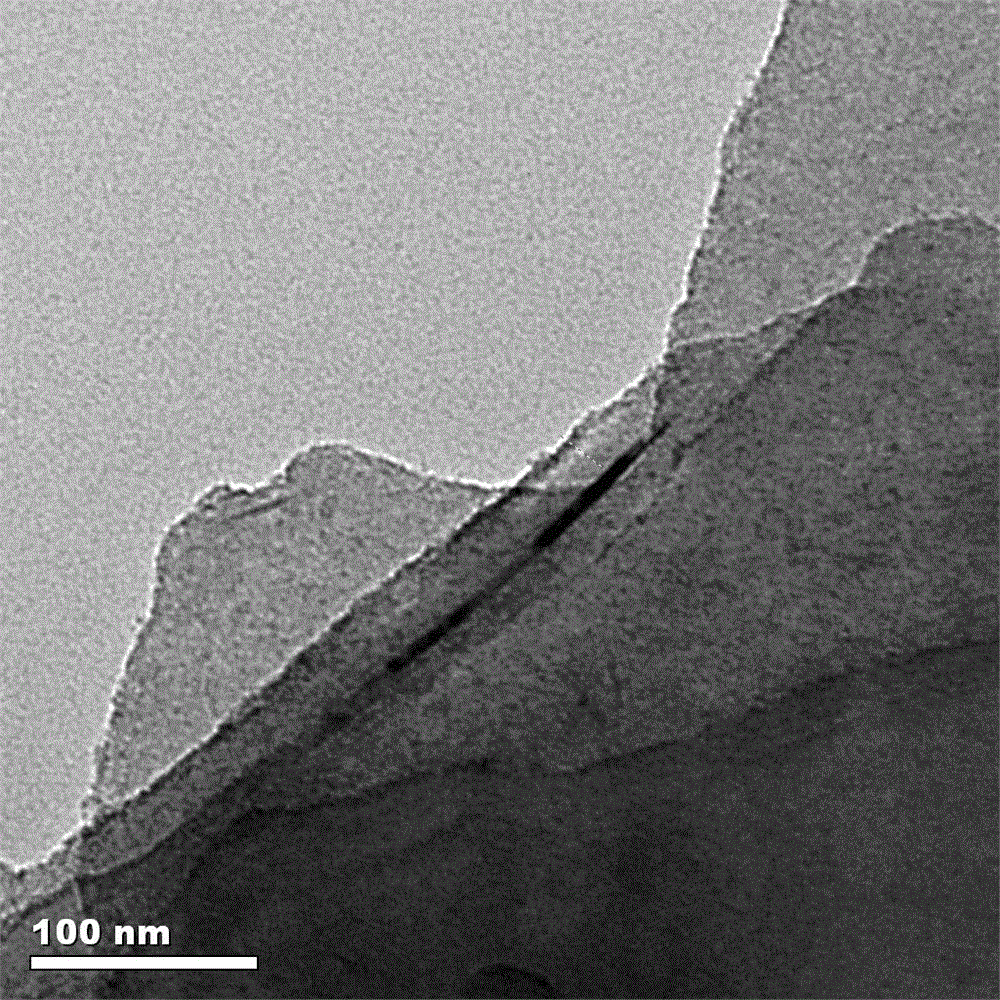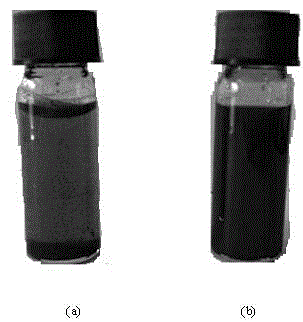Synthesis method and application of polydopamine modified graphene nanometer material with Ti<4+> fixed on surface
A nanomaterial, polydopamine technology, applied in the analysis of materials, material analysis by electromagnetic means, preparation of test samples, etc., can solve problems such as reducing the specificity of enriched phosphorylated peptides, and achieve excellent environmental stability and biological stability. Compatibility, High Sensitivity, High Sensitivity Effects
- Summary
- Abstract
- Description
- Claims
- Application Information
AI Technical Summary
Problems solved by technology
Method used
Image
Examples
Embodiment 1
[0032] Polydopamine modified graphene and immobilized Ti on the surface 4+ Synthesis of Nanomaterials:
[0033] (1) Disperse graphene in concentrated nitric acid, stir at 60 °C for 7 hours, wash with water until neutral, and dry in a vacuum oven;
[0034] (2) Disperse 10 mg of acidified graphene into 40 mL of dopamine aqueous solution with a concentration of 1 mg / mL, and make it uniformly dispersed;
[0035] (3) Under the condition of continuous magnetic stirring, quickly add 10 mL concentration of tris buffered solution of 10 mmol / L (pH is 8.5) to the product obtained in step (2);
[0036] (4) The solution obtained in step (3) was stirred and reacted by magnetic force at room temperature for 16 hours;
[0037] (5) washing the product obtained in step (4) three times with deionized water to remove impurities and dopamine monomers on the surface of the product;
[0038] (6) Disperse the product obtained in step (5) into 100 mmol / L of Ti (SO 4 ) 2 solution, magnetically st...
Embodiment 2
[0042] Polydopamine modified graphene and immobilized Ti on the surface 4+ Application of Nanomaterials in Enrichment of Phosphorylated Peptides in β-casein:
[0043] (1) Sample preparation: β-casein in 25mmol / L NH 4 HCO 3 in solution 37 o C enzymatic hydrolysis for 16 h.
[0044] (2) Enrichment: Disperse 10 μL, 2 mg / mL nanomaterials into 200 μL 0.1% volume ratio TFA50% volume ratio ACN centrifuge tube containing the phosphorylated peptide from step (1), enrich at 37°C for 30 min; 0.1% volume ratio TFA and 50% volume ratio ACN buffer wash and magnetic separation 3 times; 5 μL 0.4 M ammonia water elution for 10 min.
[0045] (3) Mass spectrometry analysis: Take 0.5 μL of the eluate obtained in step (2) to spot the target and perform mass spectrometry analysis. The mass spectrogram is as follows: Figure 4 as shown, Image 6 is polydopamine modified graphene and immobilized Ti on the surface 4+ Nanomaterial enrichment of phosphorylated peptides in β-casein with detectio...
Embodiment 3
[0047] Polydopamine modified graphene and immobilized Ti on the surface 4+ Application of Nanomaterials in Enrichment of Phosphopeptides in Mixed Proteins
[0048] (1) Sample preparation: bovine serum albumin (BSA) was first reductively alkylated with dithiothreitol and iodoacetamide, and then at 37 o C enzymatic hydrolysis for 16 h. β-casein in 25mM NH 4 HCO 3 in solution 37 o C enzymatic hydrolysis for 16 h. Add bovine serum albumin (BSA) and β-casein at a molar ratio of 1000:1 to a centrifuge tube containing 0.1% TFA and 50% ACN.
[0049] (2) Enrichment: 10 μL, 2 mg / mL The nanomaterials obtained in Example 1 were dispersed into 200 μL 0.1% volume ratio TFA 50% volume ratio ACN centrifuge tube containing the phosphorylated peptide in step (1), at 37°C Enriched for 30 min; washed with 0.1% volume ratio TFA and 50% volume ratio ACN buffer and magnetically separated 3 times; 5 μL 0.4 M ammonia water was eluted for 10 min.
[0050] (3) Mass spectrometry analysis: Take 0....
PUM
 Login to View More
Login to View More Abstract
Description
Claims
Application Information
 Login to View More
Login to View More - R&D
- Intellectual Property
- Life Sciences
- Materials
- Tech Scout
- Unparalleled Data Quality
- Higher Quality Content
- 60% Fewer Hallucinations
Browse by: Latest US Patents, China's latest patents, Technical Efficacy Thesaurus, Application Domain, Technology Topic, Popular Technical Reports.
© 2025 PatSnap. All rights reserved.Legal|Privacy policy|Modern Slavery Act Transparency Statement|Sitemap|About US| Contact US: help@patsnap.com



